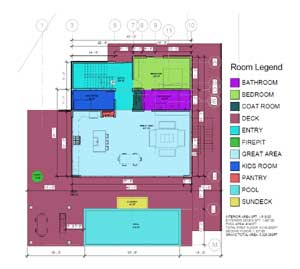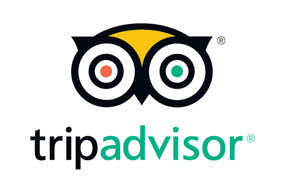Website Accessibility Information
The Web Content Accessibility Guidelines (WCAG) is an internationally recognised standard created by the World Wide Web Consortium (W3C).
The purpose of the WCAG standard is to define how to “… make Web content more accessible to people with disabilities. Accessibility involves a wide range of disabilities, including visual, auditory, physical, speech, cognitive, language, learning, and neurological disabilities. Although these guidelines cover a wide range of issues, they are not able to address the needs of people with all types, degrees, and combinations of disability. These guidelines also make Web content more usable by older individuals with changing abilities due to aging and often improve usability for users in general.”.
The first version of WCAG was published in 1999 as WCAG 1.0. In 2008, WCAG 2.0 was released and remains the definitive world standard at this time. However, there is a new update available called WCAG 2.1 released in 2018 which includes everything in WCAG 2.0 plus additional support for web content on mobile devices.
WCAG Versions
Which WCAG applies to my mainstream organisation?
There are currently two supported versions of the web accessibility standard – WCAG 2.0 and WCAG 2.1. As such, it can be confusing to determine which one your mainstream organisation should consider.
The choice between WCAG 2.0 and 2.1 will largely come down to an organisation’s policy position, time and budget. Given that WCAG 2.1 contains everything in WCAG 2.0 plus some extra guidance for users of mobile devices, a good default position is to implement WCAG 2.1 knowing that you have covered all the requirements for both desktop and mobile web accessibility.
However, if you just want to follow the requirements of current government policy, WCAG 2.0 remains the preferred standard. Additional information of specific policies can be found in the policy section.
WCAG Overview
Overview
Regardless of whether you choose to implement WCAG 2.0 or 2.1, the good news is that both guidelines use the same terminology. The guidelines are separated into the following parts:
Design principles: The four overarching principles of accessible website development.
Guidelines: short statements providing guidance on what should be considered by designers and developers to make a website accessible.
Success Criteria: Specific technical requirements to ensure that a website is compliant with the standard.
WCAG Design Principles
Design Principles
To ensure that your organisation meets the WCAG standard, it must follow the four POUR design principles:
Perceivable: Information and user interface components must be presentable to users in ways they can perceive.
Operable: User interface components and navigation must be operable.
Understandable: Information and the operation of user interface must be understandable.
Robust: Content must be robust enough that it can be interpreted reliably by a wide variety of user agents, including assistive technologies
WCAG Guidelines
Guidelines
Sitting underneath the four POUR principles are a series of guidelines. For WCAG 2.0 there are twelve guidelines. For WCAG 2.1 there is one additional guideline taking the total to thirteen.
The twelve WCAG 2.0 guidelines are as follows:
1. Perceivable
1.1 Provide text alternatives for any non-text content so that it can be changed into other forms people need, such as large print, Braille, speech, symbols or simpler language.
1.2 Provide alternatives for time-based media.
1.3 Create content that can be presented in different ways (for example, simpler layout) without losing information or structure.
1.4 Make it easier for users to see and hear content including separating foreground from background.
2. Operable
2.1 Make all functionality available from a keyboard.
2.2 Provide users enough time to read and use content.
2.3 Do not design content in a way that is known to cause seizures.
2.4 Provide ways to help users navigate, find content, and determine where they are.
3. Understandable
3.1 Make text content readable and understandable.
3.2 Make Web pages appear and operate in predictable ways.
3.3 Help users avoid and correct mistakes.
4. Robust
4.1 Maximise compatibility with current and future user agents, including assistive technologies.
WCAG 2.1 also features the following additional guideline:
2.5 Pointer Accessible: Make it easier for users to operate functionality through various inputs beyond keyboard.
WCAG Success Criteria
Success Criteria
To achieve WCAG compliance, W3C have broken up the success criteria into three different implementation levels. These levels are known as Level A, AA and AAA respectively.
In the original WCAG standard, W3C described the differences between the levels like this:
Priority 1: A Web content developer must satisfy this checkpoint. Otherwise, one or more groups will find it impossible to access information in the document. Satisfying this checkpoint is a basic requirement for some groups to be able to use Web documents.
Priority 2: A Web content developer should satisfy this checkpoint. Otherwise, one or more groups will find it difficult to access information in the document. Satisfying this checkpoint will remove significant barriers to accessing Web documents.
Priority 3: A Web content developer may address this checkpoint. Otherwise, one or more groups will find it somewhat difficult to access information in the document. Satisfying this checkpoint will improve access to Web documents.
If the first point was achieved this would meet Level A. If both the first and second points were achieved it would meet Level AA, and if all three were achieved it would meet Level AAA.
WCAG 2.0 Level AA compliance; or WCAG 2.1 Level AA compliance.
Translation of Website
BOOK NOW
Virtual Tours

Hotel Features

Free WiFi and Free Parking
Outdoor Kitchen
Year Round Pool on Ocean
Rooftop Spa





